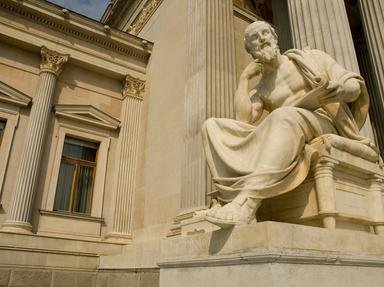5. The thirty-six stratagems are related to the "Book of Changes", represented by the hexagrams for earth. Who wrote the "Book of Changes"?
From Quiz The "Thirty-Six Stratagems" of Ancient China
Answer:
Fu Xi
The Chinese classics "Book of Changes" ("I Ching") was created by Fu Xi, considered by some to be an ancient Chinese mythological figure. He developed the trigrams (known as bagua in Chinese Pinyin) revealed to him supernaturally. The arrangement was based on the markings on the back of a mythical dragon horse (aka turtle) which emerged from the Luo River. "I Ching" was compiled during the Zhou Dynasty.
The number 36 of the hexagram came from the trigrams on the Book of Changes which is the philosophy of unity of opposition, Yin (female) and Yang (male).
The hexagram consists of 6 stacked horizontal lines, with broken and unbroken lines, consisting of a total of 36 lines. The 36 lines are Qian (Heaven) with 3 lines, Dui (Lake) , Li (Fire) and Xun (Wind), each with 4 lines , Zhen (Thunder), Gen (Mountain) and Kan (Water), each with 5 lines and Kun (Earth) with 6 lines.



 = Top 5% Rated Quiz,
= Top 5% Rated Quiz,
 Top 10% Rated Quiz,
Top 10% Rated Quiz,
 Top 20% Rated Quiz,
Top 20% Rated Quiz,
 A Well Rated Quiz
A Well Rated Quiz